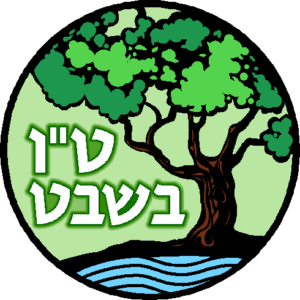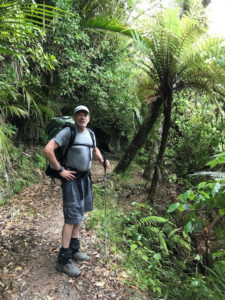by Rabbi Brian Besser, Congregation Beth Shalom, Bloomington
 What is the origin of Tu B’Shevat, the Jewish holiday devoted to connecting us to the earth?
What is the origin of Tu B’Shevat, the Jewish holiday devoted to connecting us to the earth?
Tu B’Shevat — celebrated this year on January 31 — is first mentioned fifteen hundred years ago in the Talmud, the great compendium of Jewish law, as the legal designation for when the agricultural cycle begins. Hence its nickname: “New Year of the Trees.” In the 20th century, pioneers returning to the Land of Israel began planting millions of trees annually on Tu B’Shevat, in order to reverse and heal centuries of desertification and degradation of the landscape.
But the ecological stakes are now global. In recent decades, Tu B’Shevat has developed into a platform for protesting the enormity of human destruction inflicted against God’s Creation, including massive deforestation, loss of habitat and biodiversity, extinction of species, and climate change.
The Jewish mandate to preserve the natural world is ancient. In the Book of Deuteronomy, God commands: “when you besiege a city to conquer it, you may not chop down trees to fashion siege works. For is a tree human, that it may withdraw from you.” The idea is that trees are defenseless against human assault; they need us to protect them. If, in the utmost exigency of warfare, the eradication of trees is prohibited, how much more so, during normal times of peace? The Rabbis derived from this Biblical verse a basic moral principle: the needless destruction of any natural resource is wrong.
What is the underlying theology of the Jewish conservation ethic? Is it to safeguard the environment for future generations? Or is it that other forms of life place upon us intrinsic demands, separate from their potential benefit to us? For me, the Biblical story of Noah proves decisive on this question. When God decides to inflict a massive Flood upon the world because of human corruption, God first instructs Noah to send into the ark all the creatures of the earth, two of each kind. From this passage, it is clear that all species have an innate right to survive, independent of humanity.
Another key verse appears earlier in the Torah: “God placed Adam in the Garden of Eden to till it and to tend it.” The common translation suggests a tension between working the land (to till) versus protecting it for later use (to tend). But the original Hebrew can just as easily be translated: to serve it and preserve it. In this reading, the dichotomy in our relationship to the land disappears. We are left with the unambiguous obligation to live harmoniously within the overall ecosystem, rather than exploit it.
Tu B’Shevat is not just about trees. It is a reminder of the tight bond between human beings and the natural world, which we have frayed in recent decades. (In Hebrew, the word for human being, adam, comes from the word for earth, adamah.) This is a universal conviction. Chief Seattle said: “the earth does not belong to man; man belongs to the earth. Man did not weave the web of life; he is merely a strand in it. Whatever he does to the web, he does to himself.”
Chief Seattle’s warning echoes the following ancient Jewish story: “when God led Adam around the Garden of Eden, God said to him: Look at My works! See how beautiful they are, how excellent. See to it that you do not spoil My world, for if you do, there will be no one after you to repair it.”

